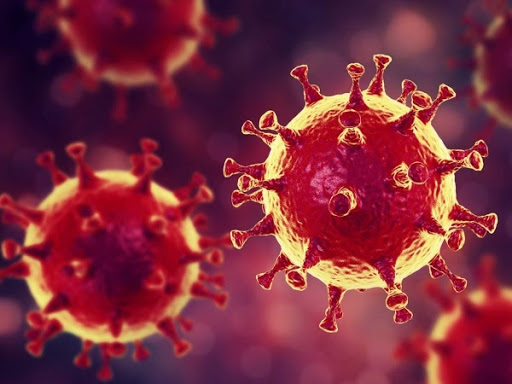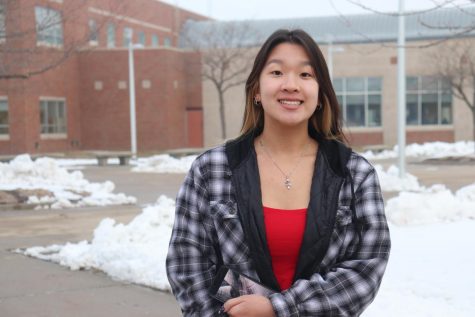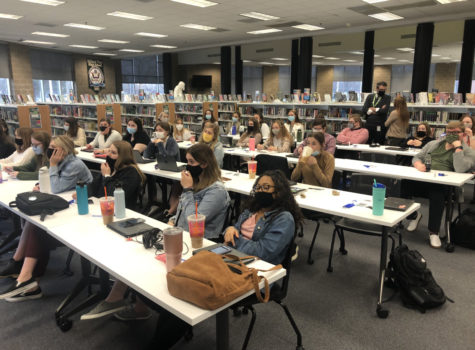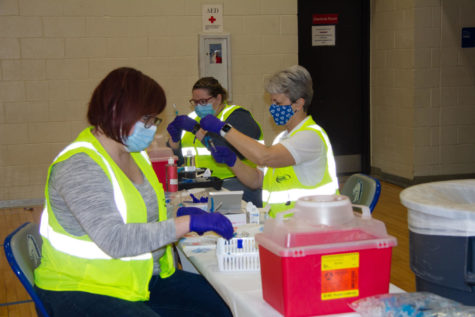Panic spreading like the novel coronavirus
With the new pandemic, people forget the research

A 3D illustration of Middle East respiratory syndrome coronavirus – MERS-CoV – which shares the same family as the novel coronavirus.
February 7, 2020
It is well established that the novel coronavirus, officially termed COVID-19, is a threat to humanity as the everchanging virus continues to spread from person to person transmission. Originating from Wuhan, China, the infection has spread all across the globe to nearly 50 countries — as of February 7th — with increasing numbers of confirmed cases in headlines everyday. Although the virus originated in China, the Chinese race faces xenophobia and racism in fear of health threats.
Obviously, the entire Chinese race is not contaminated with the bacteria nor are all individuals a threat. Sadly, coronavirus has been racialized as a “Chinese” illness and because of this, many chinese people, regardless of their affiliation with Wuhan, China, are being treated like carriers of the virus. Outside of ignorant comments made, others suffer more severely. As reported by Frank Chung, senior reporter for News.com.au, a 60-year-old Chinese man collapsed and died in Sydney’s Chinatown after suffering was believed to be a medical episode. Instead of stepping in and helping, bystanders refused to perform CPR in fear of coronavirus.
Assumptions made have blocked off people’s real world views. The people affected are only remembered as statistics as headlines for the developing situation encompasses news outlets. While the epidemic escalates, medical workers are called in, leaving behind their families and homes. As documented by Connor Boyd, a medical reporter for Daily Mail, a front-line nurse treating patients at a coronavirus-hit hospital was only allowed to give her daughter “air hugs” from a distance, even after being unable to see each other for 10 days. Similar scenarios play out for many front line medical workers. Sadly, they are overlooked when headlines of confirmed cases are pushed.
Risk for infection is high, but risk is dependent on exposure. As stated by the Centers for Disease Control, “The federal government is working closely with state, local, tribal and territorial partners as well as public health partners to respond to this public health threat,” In the United States, close monitoring and control is done for patients who are carriers. Because of this, Americans are also taking steps, along with Chinese, to maintain and discover more about the ever evolving situation.
While COVID-19 is quickly spreading, treatments for symptoms are available, especially in well-developed countries. Take for example, University of Nebraska Medicine (UNMC) maintaining a biocontainment unit and being home to the only federal quarantine in the country. Because of this, UNMC began the first clinical trial in the United States for a possible treatment for COVID-19 after monitoring and caring for approximately 60 travelers who have returned from China, as detailed by Julie Anderson, a medical reporter for the Omaha World Herald.
For the general American public, understanding the immediate risk of this new virus is low at this time along with this, serious precautions and readily available health providers are present. For Omahans, the situation at UNMC will most likely be contained and controlled considering the medical professionals and CDC personnel that will be working on cases. But even then, ignorant jokes directed toward individuals of the Chinese community continue.
As a person of Chinese descent, being eyed down in public as if I am a carrier of COVID-19 seems to be a regular occurence whenever I travel out, such as to pick up groceries. While the concern for someone’s health is completely valid, shooting dirty looks at someone of Eastern Asian descent is disrespectful, especially when individuals who have recently traveled to China would not be freely walking around.
Many of the new outlooks and perspectives formed on people who look remotely Eastern Asian have stemmed from many news outlets reporting on the number of deaths and confirmed cases, where numbers are most abundant in China. As of February 26th, there have been 14 confirmed cases in the US as reported by the CDC.
Seeing serious and intense headlines only induces fear and panic among the public which leads to biased judgement. Media outlets should take a different perspective on reporting confirmed cases, especially when those who are carriers are still people, and those who are treating patients are putting their lives at risk.















Dandan Zheng • Mar 4, 2020 at 4:27 pm
Nice piece and well written! Adversity and crises are always truer tests for decency, but it’s so easy to forget about that and get caught in mass hysteria